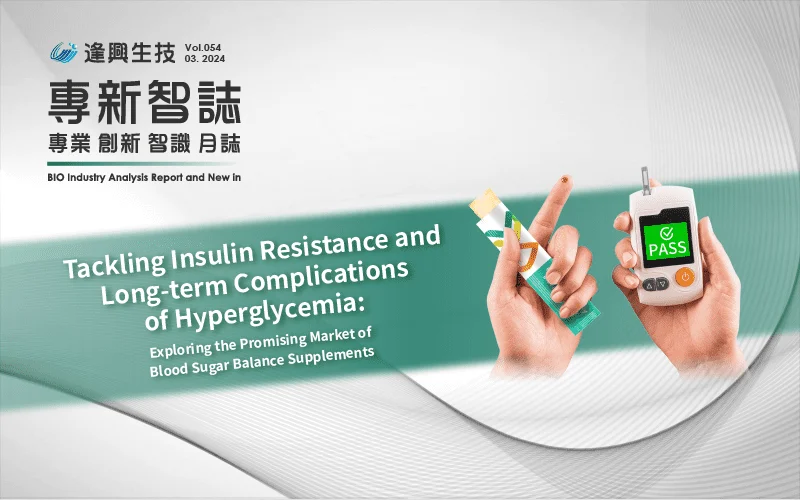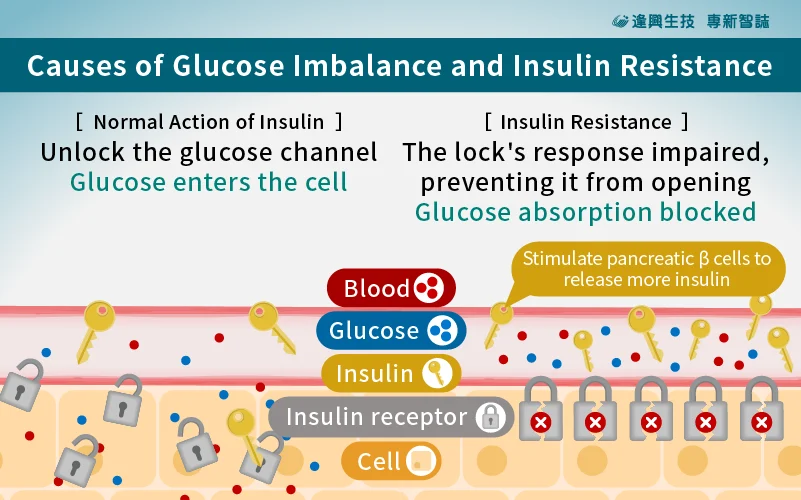
Tackling Insulin Resistance and Long-term Complications of Hyperglycemia: Exploring the Promising Market of Blood Sugar Balance Supplements

Anticipating a 50% Surge in Future Diabetic Population:
Heightened Risk of Long-term Complications of Hyperglycemia
The diabetic population continues to grow
Diabetes has remained among the top ten causes of death worldwide for several years. However, in recent times, the number of cases has seen a continual rise, with a decreasing age range among those affected.[1][2] Additionally, the majority of cases are attributed to type 2 diabetes, influenced by environmental and dietary factors. Experts warn that without significant improvements in diet and lifestyle over the next two decades, the global diabetic population could surge by another 51%.[3] To address this issue, governments worldwide are taking measures such as implementing sugar and obesity taxes to help individuals passively manage their sugar intake. The International Diabetes Federation highlights Asia and Africa as regions experiencing a sharp increase in diabetic patients. For instance, Taiwan, often referred to as the “fattest country in Asia,” reports a diabetes prevalence rate as high as 11% of the population,[4] indicating that approximately one in ten individuals is affected by the condition.
People with a family history of diabetes and those who are overweight are typically classified as high-risk groups. However, weight alone is not the sole determinant. Poor dietary habits characterized by high fat, salt, and sugar intake have given rise to a phenomenon known as “skinny fat,” where individuals have low muscle mass and excessive body fat. The Journal of the American Medical Association has cautioned that individuals with this profile, often overlooking their condition, face double the mortality risk compared to obese patients with diabetes.[5]
The consequences of elevated blood sugar levels affect every aspect of the body
The apprehension surrounding diabetes arises from its extensive and profound impacts. Beginning with subtle symptoms like increased urination, thirst, hunger, fatigue, dry skin, blurred vision, weight loss, or slow wound healing, diabetes progresses to severe, long-term complications of hyperglycemia such as stroke, cardiovascular disease, blindness, and kidney failure. These long-term complications of hyperglycemia endure for extended periods and can hardly be healed. They not only impose a significant psychological strain on patients but also caregivers and the entire family.

[1] Type 2 diabetes mellitus: Prevalence and risk factors
https://www.uptodate.com/contents/type-2-diabetes-mellitus-prevalence-and-risk-factors/print
[2] More Adolescents and Young Adults Developing Type 2 Diabetes Around the World
https://jamanetwork.com/journals/jama/article-abstract/2800417
[3] Saeedi, P., Petersohn, I., Salpea, P., Malanda, B., Karuranga, S., Unwin, N., … & IDF Diabetes Atlas Committee. (2019). Global and regional diabetes prevalence estimates for 2019 and projections for 2030 and 2045: Results from the International Diabetes Federation Diabetes Atlas.
[4] 長年為亞洲最胖國!台灣糖尿病盛行率逐年上升
https://heho.com.tw/archives/263371
[5]瘦不等於健康! 「瘦胖子」罹糖尿病死亡風險高2倍
https://health.ltn.com.tw/article/breakingnews/4172635
Maintaining Blood Sugar Balance is Crucial,
Achieved through a Low Glycemic Diet for Diabetes and Regular Exercise to Enhance Insulin Sensitivity.
The dynamic balance of blood sugar
In the prevention and management of diabetes, maintaining blood sugar balance is undeniably paramount. Insulin and its receptors function akin to keys and locks, facilitating the smooth entry of glucose into cells to uphold stable blood sugar levels. Prolonged elevation of blood sugar not only perpetuates the secretion of insulin by pancreatic β-cells, hastening their deterioration but also diminishes the responsiveness of insulin receptors, resulting in what is termed “insulin resistance.” This condition typically precedes the onset of diabetes. Early identification and proactive measures to address insulin resistance, allowing for gradual restoration of cellular function, present an opportunity to reverse the health crisis.
Nutritional management is essential for both diabetic patients and high-risk groups
Adopting a balanced diet is crucial for high-risk groups and patients to prevent deterioration. This involves incorporating a diet to reduce insulin resistance, such as onions, cauliflower, whole grains, and nuts, along with regular exercise and sufficient sleep. Patients must follow medical advice diligently to achieve comprehensive control and maintain blood sugar balance.
However, it’s widely recognized that although these habits may appear straightforward, putting them into practice is often challenging. At this juncture, sugar balance supplements serve as valuable supportive aids. Presently, many supplements that help insulin resistance are in capsule form, but difficulties with swallowing pose a challenge for consumers to maintain consistent consumption habits, with potentially significant consequences over time.
Wel-Bloom Biotech’s innovative solution presents a fresh approach to address the challenge mentioned above. Their internationally patented jelly formulation, FRESH-Jelly®, not only accommodates vegetarian and low-sugar dietary preferences but also offers a chewable texture suited for older adults. With a robust and efficient formula, it distinguishes itself from competitors, significantly aiding in managing insulin resistance and promoting sustained blood sugar stability. Consequently, it mitigates the risks associated with high blood sugar and prevents potential complications.




